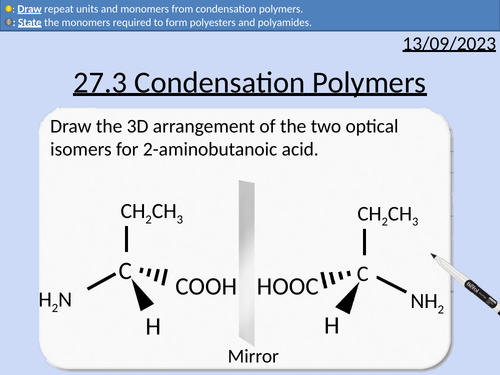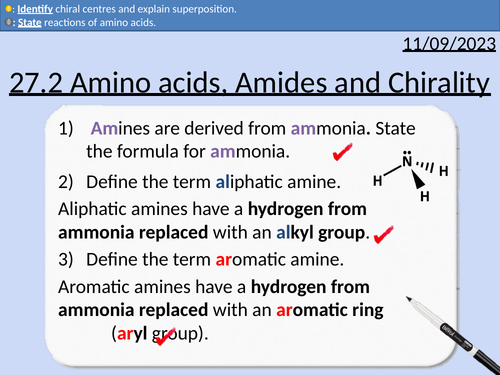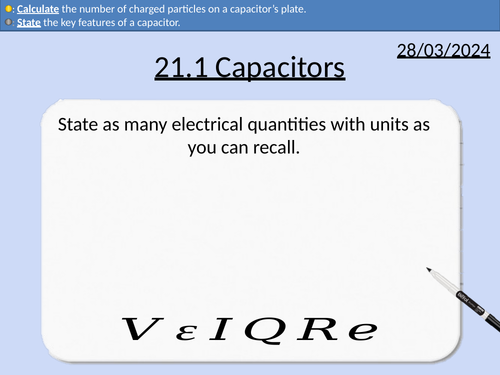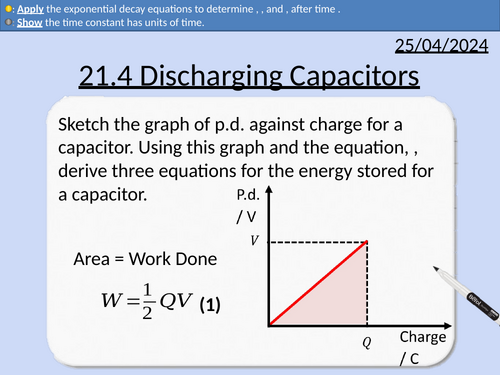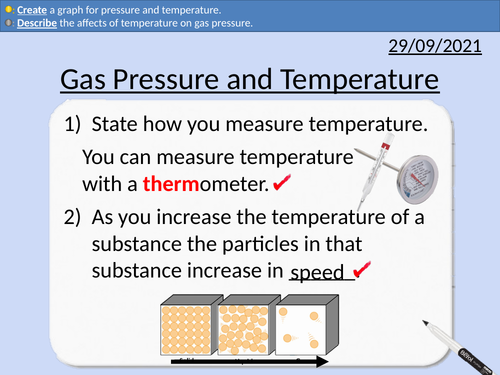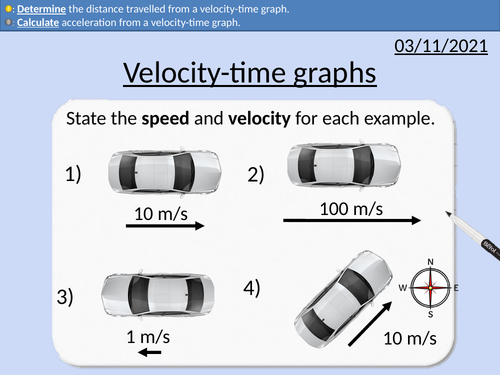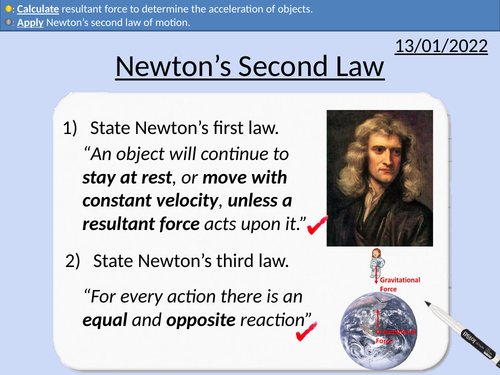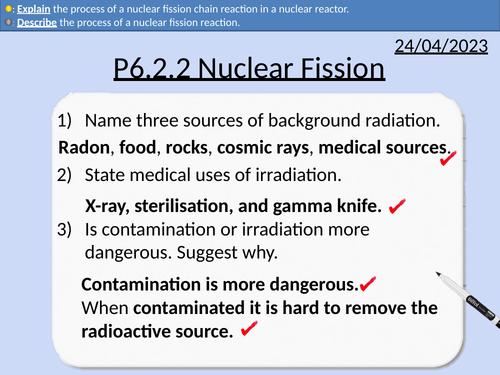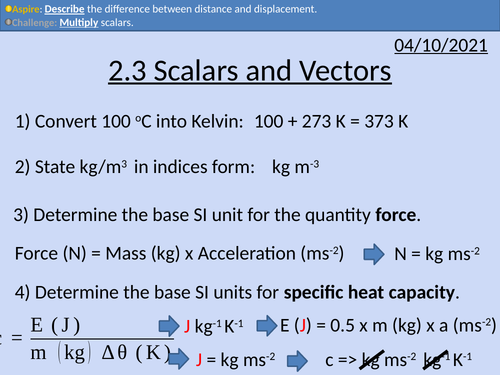497Uploads
168k+Views
72k+Downloads
All resources

A level Chemistry: Condensation Polymers
OCR A level Chemistry: 27.3 Condensation Polymers
This PowerPoint is a whole lesson included with student activities, animated answers, homework questions with answers provided.
This lesson covers:
Recap of addition polymerisation
Identifying monomers and repeat units from condensation polymers
Polyesters and ester links
Polyamides and amide links
Polyesters and polyamides formed from one monomer
Polyesters and polyamide formed from two monomers
Alkali hydrolysis of polyamides and polyesters
Acid hydrolysis of polyamides and polyesters

A level Chemistry: Amino acids, Amides and Chirality
OCR A level Chemistry: 27.2 Amino acids, Amides and Chirality
This PowerPoint is a whole lesson included with student activities, animated answers, homework questions with answers provided.
This lesson covers:
Locants: alpha, beta, and gamma
Functional groups of amino acids
General formula for amino acids
Reactions of amino acids (alkali and acid)
Esterification of amino acids
Amide functional groups
Naming amide molecules
Drawing optical isomers
Explanation of superimposable and non-superimposable images
Identifying chiral centers

OCR A level Physics: Capacitors
OCR A level Physics: 21.1 Capacitors
Module 6 Particles and Medical Physics
This PowerPoint is a whole lesson included with student activities, animated answers, homework questions with answers provided.
This lesson covers:
Electrical quantities, symbols, and units
SI prefixes and standard form
Definition of a capacitor
Structure of a capacitor
Calculating capacitance, charge, and potential difference.

OCR A level Physics: Discharging Capacitors
OCR A level Physics: 21.4 Discharging Capacitors
Module 6 Particles and Medical Physics
This PowerPoint is a whole lesson included with student activities, animated answers, homework questions with answers provided.
This lesson covers:
Exponential increase and exponential decay
Explaining how capacitors discharge through a resistor in parallel
Definition of time constant for a capacitor
Showing that time constant has units of seconds
Iterative method for finding how capacitors discharge
Using exponentials and logs.
Solving a differential equation (needed for A-level Maths).

GCSE Physics: Speakers and Microphones
This lesson presentations covers OCR Gateway Physics 9-1 P4.2.6 Speakers and Microphones.
Definition of sound waves.
Structure and operation of a speaker.
Fleming’s left hand rule.
Structure and operation of a microphone.
Electromagnetic induction.
Comparison of speakers and motors.
Comparison of microphone and generators.
Comparing microphones and speakers
Bundle

GCSE OCR Physics: P2 Forces Full scheme
All resources for P2 GCSE OCR Physics Gateway 9-1.Triple and combined (Higher and Foundation) is covered in this material.
Includes:
Distance, time, and speed
Vectors and scalars
Acceleration
Distance-time graphs
Velocity-time graphs
Equations of motion and Kinetic Energy
Forces and interactions
Free-body Diagrams
Newton’s first law
Newton’s second law
Everyday forces and their effects
Momentum
Work and Power
Stretching springs
Stretching materials and storing energy
Gravitational Fields and Potential Energy
Turning Forces
Simple Machines
Hydraulics

OCR A Level Physics: Gravitational Potential
OCR A level Physics: 18.6 Gravitational Potential
Module 5 Newtonian World and Astrophysics
This PowerPoint is a whole lesson included with student activities, animated answers, homework questions with answers provided.
This lesson covers:
Center of mass and treating spherical objects as point masses
Gravitational fields
Definition of gravitational potential
Applying the gravitational potential equation
Graph of gravitational potential against distance (V against r)
Combining gravitational potentials from more than one mass

OCR AS Physics: Kirchhoff's 1st and 2nd Law
OCR AS level Physics: Kirchhoff’s Laws and circuit diagrams is a part of the Module 4: Electrons, Waves, and Photons. PowerPoint with worked examples and homework.
Definitions of Kirchhoff’s 1st and 2nd Law
Applying Kirchhoff’s 2nd Law
Drawing circuit diagrams for parallel and series circuits

GCSE Physics: Current and Magnetic Fields
This presentation covers OCR Gateway Physics 9-1 P4.1.2 Current and Magnetic Fields.
Current Produces Magnetic Fields
Experiment to Demonstrate Magnetic Field Lines
Right-hand Corkscrew Explanation
Solenoids
MRI imaging

GCSE Physics: Electromagnetic Induction
This lesson presentations covers OCR Gateway Physics 9-1 P4.2.3 Electromagnetic Induction.
Definition of electromagnetic induction
How to increase electromagnetic induction
Why current is produced from electromagnetic induction
Why forces are produced from electromagnetic induction.
Exam Style question with solution

GCSE Physics: Gas Pressure & Temperature
This presentation covers OCR Gateway Physics 9-1 P1.3.1 Gas Pressure and Temperature
This presentation includes:
Introduction to kinetic theory
Relationship between temperature and pressure
Force by gas particles being normal to surface
Graph plotting - Extrapolation to absolute zero
Health and safety video on gas canisters and fires

GCSE Physics: Velocity-time graphs
This presentation covers OCR Gateway Physics 9-1 P2.1.5
Analysing velocity-time graphs
Calculating the gradient
Acceleration from velocity-time graphs
Distance travelled from velocity-time graphs
Worked problems and solutions

GCSE Physics: Newton's Second Law
This presentation covers OCR Gateway Physics 9-1 P2.2.4
Newton’s Second Law in Mathematical Form
Proportionalities
Rearranging Equations
Student’s problems with answers
Exam style questions with solutions

GCSE Physics: Nuclear Fission
This presentation covers OCR Gateway Physics 9-1 P6.2.2 Nuclear Fission
This PowerPoint is a whole lessons included with student activities and animated answers.
Conservation of mass
Uranium as a nuclear fission fuel
Nuclear fission process
Chain reactions in nuclear fission reactions
Control rods and moderators in nuclear reactors
Benefits and disadvantages of nuclear fission reactors.
Mass-Energy Equivalence

GCSE Physics: Motors
This presentation covers OCR Gateway Physics 9-1 P4.2.2 Construction of a motor.
Magnetic Field Lines
Construction of a commutator
How to increase the speed of a motor.
Student activities with worked solutions.

GCSE Physics: The National Grid
This presentation covers OCR Gateway Physics 9-1 P8.2.3 The National Grid
This PowerPoint is a whole lessons included with student activities and animated answers.
Structure of the National Grid
Step-up and Step-down transformers
How transformers increase the efficiency of the National Grid
Number of turns and potential difference
Current and potential difference in primary and secondary coils

OCR AS level Physics: The Electron Gun
OCR AS level Physics: The electron gun is a part of the Module 4: Electrons, Waves, and Photons.
Presentation come with worked examples, solutions and homeworks.
The structure of an electron gun.
The electron gun in the history of science (J.J. Thomson).
Rearranging equations to equate kinetic energy and work done.
Accelerating potential differences
Comparing the protons and electrons accelerated in a potential difference.

OCR AS level Physics: More Vectors
OCR AS level Physics: More Vectors is a part of the Module 2: Foundations of Physics
Presentation come with worked examples, solutions and homeworks.

OCR AS level Physics: Scalars and Vectors
OCR AS level Physics: Scalar and Vector Quantities is a part of the Module 2: Foundations of Physics
Full lesson PowerPoint with worked examples and homework with complete worked answers.
Definition of scalars and vectors
Adding quantities with the same units
Determining if a quantity is a vector or scalar from an equation
Comparing displacement and distance

OCR AS level Physics: Equations of Motion
OCR AS level Physics: Equations of Motion is a part of the Module 3: Forces and Motion
Presentation come with worked examples, solutions and homeworks.

